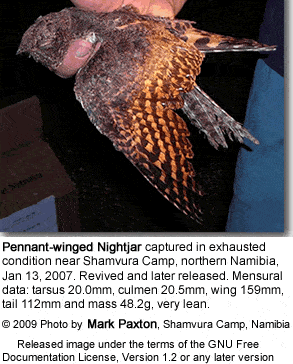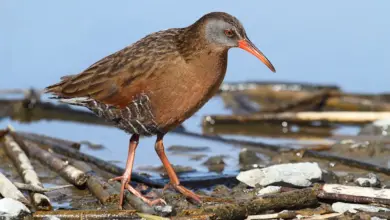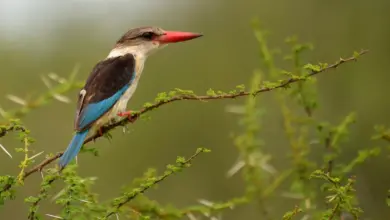Pennant-winged Nightjars (Semeiophorus or Macrodipteryx vexillarius)
The Pennant-winged Nightjars (Semeiophorus or Macrodipteryx vexillarius) is a migratory African nightjar that occurs from Nigeria to northern South Africa. In Africa, it is mostly known as Wimpelvlerknaguil.
It is related to the Standard-winged Nightjar with which it shares notable similarities in breeding strategies, roosting and feeding habits, as well as vocalizations.

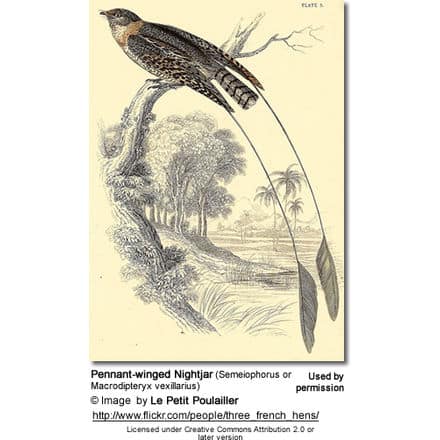
This nightjar is commonly heard within its range, but less often seen – due to its nocturnal habits. Its brown-mottled plumage keeps it well camouflaged during the day, when it is also usually hidden away sleeping.
Their cryptic appearance blends perfectly into their woodsy habitat; hence they are very difficult to spot during the daytime, when they are generally hidden away sleeping.
They are most easily detected at night when light from car headlights are reflected red from their eyes, as they are sitting on tracks or roads. However, their presence is most often made known by their loud calls given at dusk.
Distribution / Range
The Pennant-winged Nightjars range includes central, northeastern and eastern Angola, southern Democratic Republic of the Congo, and southwestern Tanzania, south to northeastern Botswana, northeastern Namibia (Caprivi Strip) and extreme northeastern South Africa.
They winter from southeastern Nigeria to Uganda. Within its natural range, they are usually observed alone.
They are native to the following African countries:
Angola, Botswana, Burundi, Cameroon, Central African Republic, Chad, Congo, Gabon, Kenya, Malawi, Mozambique, Namibia, Nigeria, Rwanda, South Africa, Sudan, Tanzania, Uganda; Zambia, and Zimbabwe
They are vagrants to:
Burkina Faso; Equatorial Guinea, Gambia, Guinea-Bissau, Niger, Somalia, Swaziland
Their preferred habitats:
- Breeding habitat incudes grasslands and plateau woodlands (particularly Miombo, where they favor stony or boulder-strewn hillsides)
- Migrate along the Kenyan Rift Valley and Lake Victoria regions,
- Non-breeding habitat: subtropical savanna from Nigeria to Sudan.
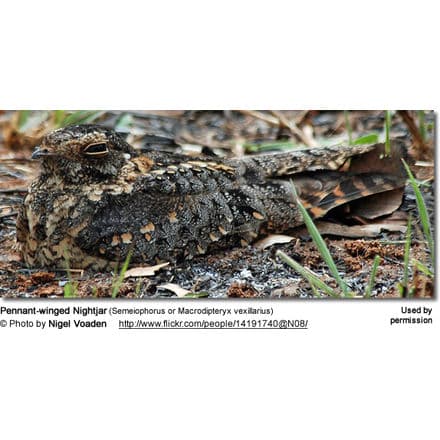
Alternate (Global) Names
Afrikaans: Wimpelvlerknaguil … Czech: lelek vlajkový … Dutch: Wimpelnachtzwaluw … German: … Flaggennachtschwalbe … Danish: Vimpelvinge … Finnish: peitsikehrääjä … French: Engoulevent porte-étendard … Italian: Succiacapre dal vessillo … Japanese: fukinagashiyotaka … Norwegian: Dragenattravn … Polish: dziwolotek wstegopióry … Portuguese: Noitibo-de-estandarte … Slovak: lelek vlajkokrídly … Spanish: Chotacabras Cuelgacintas … Swedish: Flaggnattskärra
Description
The Pennant-winged Nightjars has a height of about 11 inches (27 cm) and weighs around 2.5 oz or 70 g, which is about the size of a starling.
The head and its bill are black-colored. The eyes and the legs are brown. The throat is white and the back is black.
The male can be easily identified from the female by the broad white band over the otherwise black primaries (the longest wing feathers).
Males also grow a 9th primary feather on each side of the wing during the breeding season, which will grow longer as he matures – up to twice his body length (please refer to image below).
These elongated feathers look like pennants (narrow, tapering flags) — and this species has been named for this physical trait. However, these “pennants” often fall off, or are broken off, after the breeding season.
Like other nightjars, they have special physical adaptations that facilitate foraging at night and catching prey in mid-air, for example:
- The beak has evolved to be much wider than it is long, and it opens wide both – vertically as well as horizontally. The resulting big gaping mouth allows it to more easily scoop up insects in flight.
- Its large eyes are placed on each side of the head (laterally) – which significantly increases its visual field.
- A reflective membrane behind the retina (tapetum) enhances its vision at night by augmenting the light-gathering ability of its eyes.
- They also have forward-facing whiskers that may either help them funnel food into the mouth or protect the eyes.
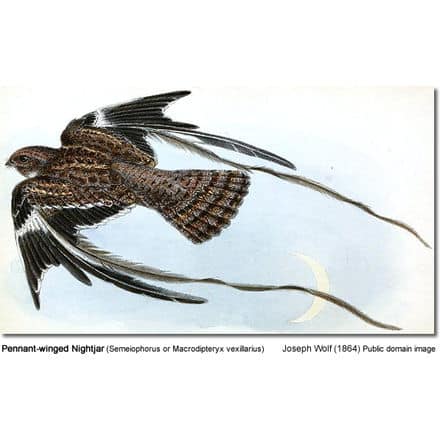
The Feeding Habits of Nightjars / Nighthawks
Reproduction / Nesting
Most nesting activities occur from spring to early summer south of the equator. After the breeding season (mid-summer), they usually return to the northern hemisphere.
The male establishes his breeding his territory and attracts the attention of females with an insect-like song, and he performs a display flight, wherein receptive females will join in.
Pennant-winged Nightjars are bigamous — meaning they will take on more than a single mate.
Pennant-winged Nightjars don’t actually construct a nest, as most other bird species do. They simply place the eggs on the ground on open soil covered with dead leaves.
Nesting appears to be timed in such a way that the moon is more than half full at the time they are feeding their young – likely as the additional light during the night facilitates caring for the young and foraging for food.
The female may lay one to two eggs (mostly two) that are reddish creamy / pinkish in color, with brown and spots or blotches.
During the day, the incubation of the eggs is undertaken by the female, while both parents share the incubation at night. The incubation period is about 19 to 21 days.
The hatchlings are covered in down and are capable of short-distance movements within 24 hours of hatching. They usually move apart shortly after hatching, maybe to make it more difficult for predators to spot them. The parents also shove them apart with their feet as they flush from the nest.
The male usually stands guard and defends the nest and the young. He will hover in place near the nest with his body in a nearly vertical position and his tail spread. The adults communicate with their young via soft clucking sounds to which the chicks respond.
Both parents feed the young regurgitated food (insects), and they continue to brood them until fledging. The young take their first flight when they are about 20 to 21 days old.
If conditions are favorable, the female may lay a second clutch close to the first and while she is incubating the new set of eggs, the male continues to care for the young from first brood.
They have developed several behavioral adaptations to minimize predation:
- Their nocturnal (night) lifestyle reduces the likelihood of being detected by daytime predators. During the daytime, they typically sleep on the ground where they are perfectly camouflaged by their “earthy” colored plumage. They almost always change their roost sites on a daily basis.
- When nesting, they sit quietly on the eggs, minimizing any movements that could get them detected.
- If an intruder does get close to the nest, the parents may try to lead them away by first flushing off the nest and when landing feigning injury as they lead the potential thread away from the nest. While the parent performs this distraction display, the young may scatter and freeze.
- The parent who is not incubating the eggs or brooding the young will roost away from the nesting area.
- They may also move the eggs or young to prevent them from being preyed upon.
- Nightjars avoid voicing when they hear the calls made by predatory nocturnal animals, such as owls.
Beauty Of Birds strives to maintain accurate and up-to-date information; however, mistakes do happen. If you would like to correct or update any of the information, please contact us. THANK YOU!!!


